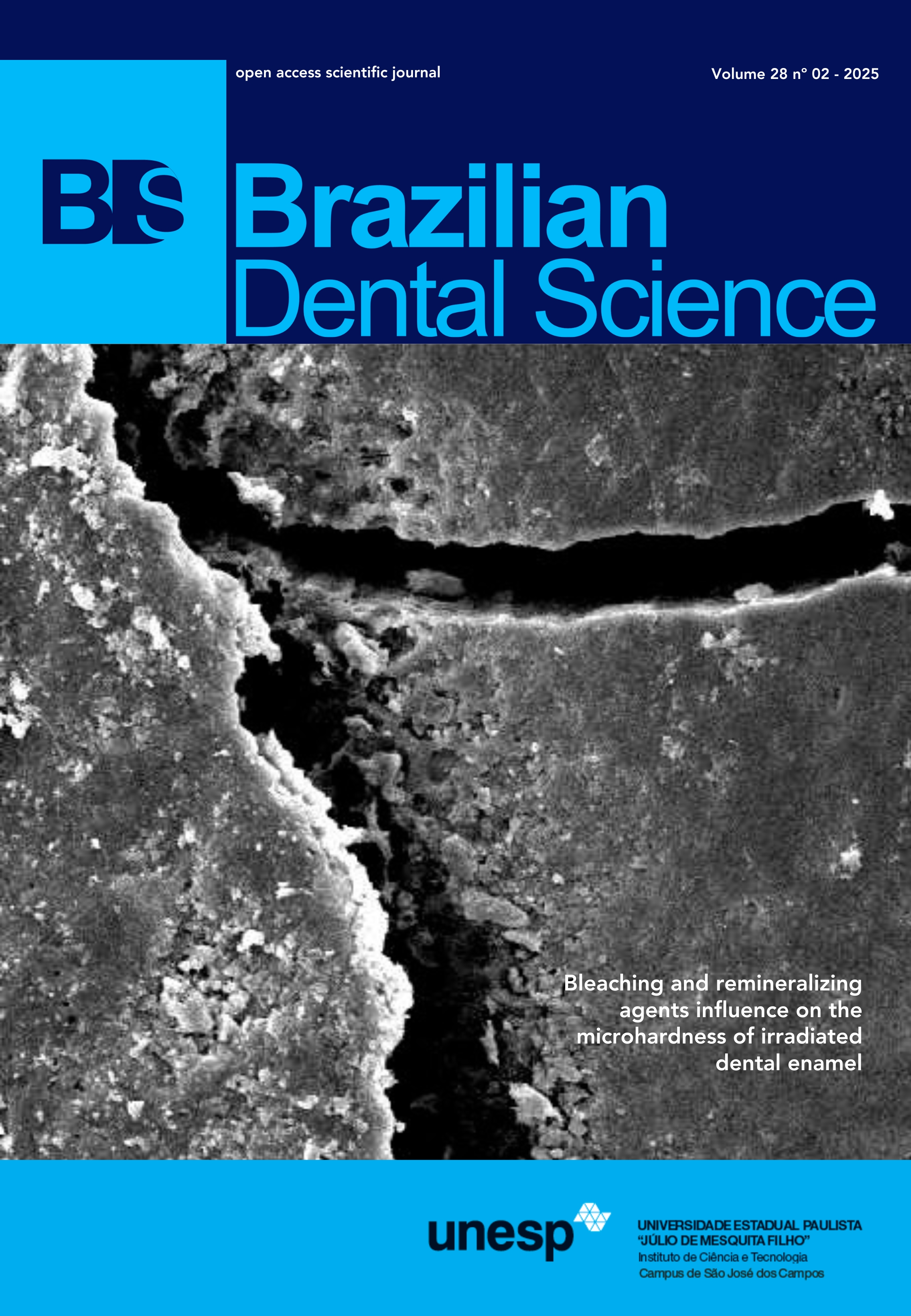Effect of printing angle and aging of a 3D-printed resin for provisional prostheses: an in vitro study on fracture resistance
DOI:
https://doi.org/10.4322/bds.2025.e4758Resumo
Objective: The objective of this study is to evaluate the effect of printing angulation and aging on the fracture resistance of 3D-printed resin for provisional prostheses: an in vitro study. Material and Methods: Specimens of 3D-printed resin with dimensions of 25×2×2 mm were processed according to the manufacturer’s recommendations. Each experimental group consisted of n=5, categorized as follows: 0°, 45°, 90°, 0°A, 45°A, 90°A. Surface characterization was performed using scanning electron microscopy (SEM) (n=1). The specimens in groups 0°A, 45°A, and 90°A underwent aging in an incubator for 60 days at a temperature of 37 °C ± 0.5 °C in distilled water. All experimental groups were tested for three-point bending resistance using a universal testing machine, equipped with a 100 kgf load cell, set to a constant speed of 5 mm/min. Flexural strength values were recorded in megapascals (MPa). The mechanical strength data of the experimental groups were analyzed using a two-factor ANOVA test (p < 0.05) to assess the effects of printing angulation and aging. The findings from surface microscopy and fractography were qualitatively presented. Results: Distinct surface characteristics were identified in each experimental group, with the printed layers being more evident in the 45° and 90° angulations. A reduction in mean flexural strength values was observed for the 0° and 45° angulations after aging; however, no statistically significant differences were identified for the studied factors. The fractured specimens exhibited multiple fragments. Conclusion: Printing angulation and aging did not affect the mechanical performance of the 3D-printed resin for provisional prostheses.
KEYWORDS
Dental prosthesis; Digital technology; Flexural strength; Printing Angle; Three-dimensional printing.
Downloads
Downloads
Publicado
Como Citar
Edição
Seção
Licença
Copyright (c) 2025 Gabriela Marcele Lins da Silva, Sandro Matheus Albuquerque da Silva, Maria Terêza Lopes de Moura Borba, Adrielly Oliveira Soares de Araujo, Antonio José Tôrres Neto, Larissa Araújo Lopes Barreto, Osman Jucá Rêgo de Lima Netto, Viviane Maria Gonçalves de Figueiredo

Este trabalho está licenciado sob uma licença Creative Commons Attribution 4.0 International License.
TRANSFERÊNCIA DE DIREITOS AUTORAIS E DECLARAÇÃO DE RESPONSABILIDADE
Toda a propriedade de direitos autorais do artigo "____________________________________________________________________" é transferido do autor(es) para a CIÊNCIA ODONTOLÓGICA BRASILEIRA, no caso do trabalho ser publicado. O artigo não foi publicado em outro lugar e não foi submetido simultaneamente para publicação em outra revista.
Vimos por meio deste, atestar que trabalho é original e não apresenta dados manipulados, fraude ou plágio. Fizemos contribuição científica significativa para o estudo e estamos cientes dos dados apresentados e de acordo com a versão final do artigo. Assumimos total responsabilidade pelos aspectos éticos do estudo.
Este texto deve ser impresso e assinado por todos os autores. A versão digitalizada deverá ser apresentada como arquivo suplementar durante o processo de submissão.




























